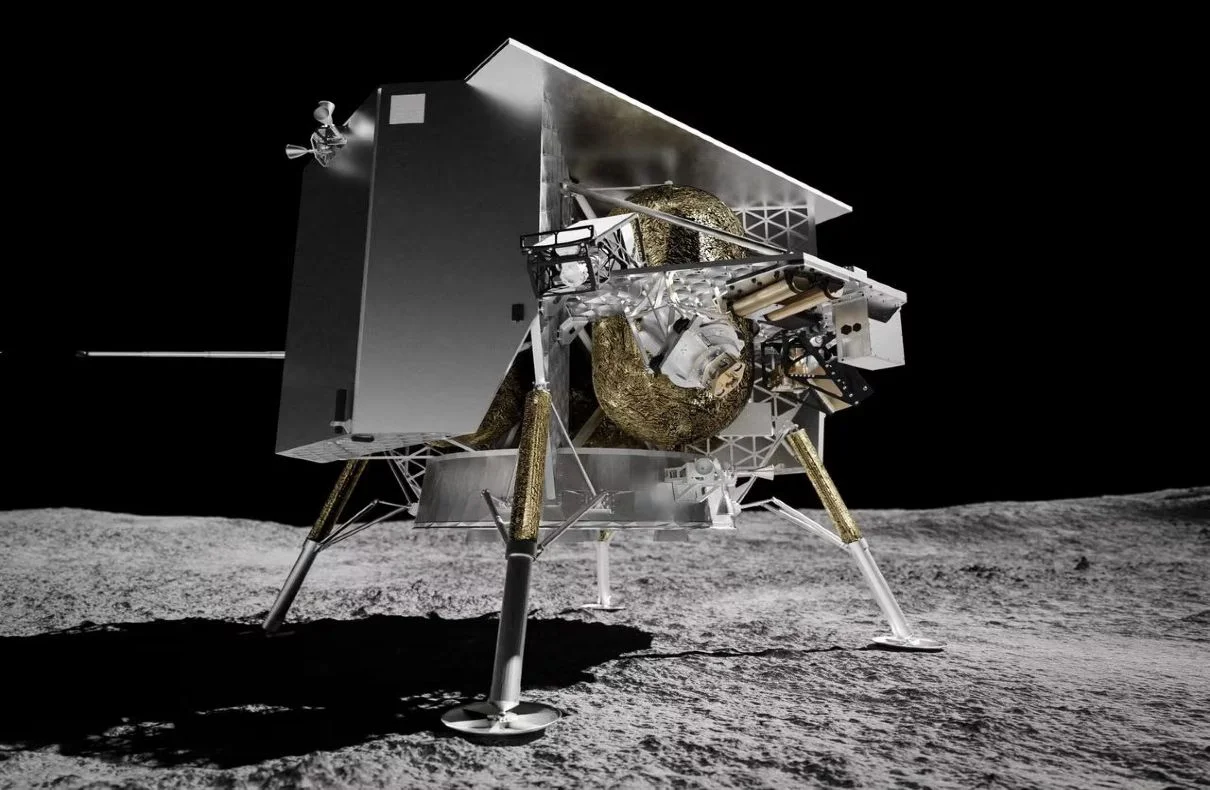
The first US moon lander in over 50 years is scheduled to launch on Monday, January 8, 2024 at 2:18 AM ET. The Astrobotic lunar lander, Peregrine, will launch from Florida’s Cape Canaveral Space Force Station on the United Launch Alliance’s Vulcan Centaur Rocket.
The Peregrine lander is a small robotic probe that will carry 20 experiments and international payloads, including six NASA instruments and a sensor valued at $108 million. The goal of the mission is to eventually turn the moon into a base for planetary travel.
The Vulcan rocket that will carry the Peregrine has never flown before, but its manufacturer, United Launch Alliance, has had a 100% mission success rate with its predecessor rockets. Recent forecasts show about an 85% chance of clear weather for takeoff.
Astrobotic’s Peregrine lander, named after the fastest animal on Earth, is set to embark on an extraordinary journey to the moon. Developed by a Pittsburgh-based company, this uncrewed spacecraft will launch atop the United Launch Alliance’s Vulcan Centaur rocket. The mission is not only a crucial milestone for Astrobotic but also a significant achievement for the commercial space industry as a whole.
Scientists Find Evidence of an Ocean on Saturn’s Moon Mimas
The Peregrine mission is part of NASA’s Commercial Lunar Payload Services (CLPS) program, which aims to leverage private sector capabilities to deliver scientific instruments and equipment to the lunar surface. This partnership between NASA and commercial providers allows for more frequent and cost-effective lunar missions, paving the way for future human exploration.
Landing on the moon is an incredibly complex and high-risk endeavor. While NASA has successfully landed on the moon in the past, no private company has achieved this feat. The Peregrine mission represents a pioneering effort to demonstrate the capabilities of commercial entities in lunar exploration.
John Thornton, CEO of Astrobotic, acknowledges the high stakes involved in this mission. The success of the Peregrine lander would not only solidify Astrobotic’s position in the industry but also open up new opportunities for commercial ventures in space. However, Thornton also recognizes the challenges inherent in attempting a soft landing on the moon and the uncertainties that come with it.
While the Peregrine mission is a private endeavor, it is sponsored by NASA’s CLPS program, emphasizing the agency’s commitment to partnering with the commercial sector. Through this program, NASA aims to foster entrepreneurship and innovation in the American industrial base, enabling more frequent and cost-effective lunar missions.
As part of the mission, the Peregrine lander will carry five NASA instruments to the moon. These instruments will measure radiation levels, analyze the lunar surface composition, and study the abundance of materials such as hydrogen. The data collected will provide valuable insights for future manned missions and the utilization of the moon’s resources.
The Peregrine mission has not been without controversy. The inclusion of payloads from companies offering “space burials” has sparked concerns regarding the cultural and sacred significance of the moon, particularly to Indigenous cultures. Representatives from the Navajo Nation have raised objections, stating that depositing human remains on the moon would be a desecration.
Japanese Spacecraft Makes History with Perfect Moon Landing
Astrobotic acknowledges the concerns raised and hopes to find a resolution with the Navajo Nation. It is crucial to strike a balance between advancing scientific exploration and respecting cultural sensitivities as we venture further into space.
The Peregrine lander’s journey to the moon holds significant scientific promise. It will target an ancient lava flow known as Sinus Viscositatis, or the Bay of Stickiness, where unique geological formations suggest unusual lava consistency. The mission aims to measure radiation levels, study the lunar exosphere, and analyze surface and subsurface water ice.
One of the key instruments onboard the Peregrine lander is the PITMS (Peregrine Ion-Trap Mass Spectrometer). Developed by the Open University, this mini mass spectrometer will analyze the composition of the lunar exosphere and monitor its changes over the mission’s duration. PITMS will provide valuable data on water molecules, their release from the surface, and the circulation of lunar water.
The Peregrine mission represents the beginning of a wave of commercial lunar missions under NASA’s CLPS program. Astrobotic’s successful landing would pave the way for future missions by other private companies, each contributing to the growing lunar economy.
Astrobotic’s CEO, John Thornton, envisions a bright future for the commercial space industry, with Pittsburgh playing a significant role. Just as the city reinvented itself from its steel industry roots, the successful lunar landing by Astrobotic demonstrates the city’s capability to thrive in the evolving space sector.
As commercial interest in the moon grows, it becomes crucial to establish agreements and regulations to protect sites of scientific interest. Potential future bases for lunar telescopes or gravitational wave detectors require careful consideration and planning. Collaboration between space agencies, commercial entities, and the scientific community will be essential to ensure the responsible and sustainable exploration of the moon.
